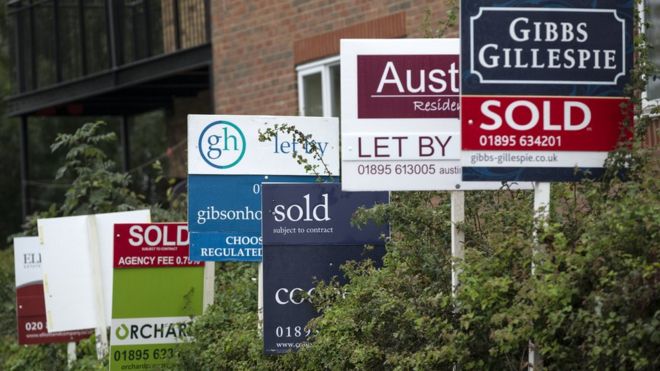- 8 hours ago
- Business
 Getty Images
Getty Images
Buy-to-let landlords should face new limits on the amount they can borrow, the Bank of England has proposed.
It suggested that lenders should be much stricter when deciding whether or not to grant landlords a mortgage.
Instead of just taking their rental income into account, the Bank wants lenders to look at their wider financial situation as well.
If adopted, the new rules could reduce lending to landlords by up to 20% over the next three years.
The Prudential Regulation Authority (PRA) - an arm of the Bank - has recommended that banks and building societies take account of:
- all the costs a landlord might have to pay when renting out a property
- any tax liability associated with the property
- a landlord's personal tax liabilities, "essential expenditure" and living costs.
- a landlord's additional income - where this is being used to support the borrowing. This income should be "verified".
Future growth
The PRA said the new standards would "curtail inappropriate lending, and the potential for excessive credit losses."
The Bank's Governor, Mark Carney, warned in December that mass-selling by landlords could destabilise the economy.
The PRA has also suggested that lenders should apply a stricter interest rate "stress test", to measure affordability in the event of a rise in interest rates.
It said lenders should look at potential rate rises over a five year period from the start of a mortgage.
They should also consider whether a landlord could afford repayments in the event of a 2% rise in interest rates.
The PRA said that 75% of lenders already meet these stricter criteria. However it is thought that some of the major lenders do not.
'Interference'
Landlords already face a series of tax changes, which it is thought will limit the growth in the buy-to-let market.
These include a 3% stamp duty surcharge from next month. From 2017, landlords will only be able to claim tax relief on their mortgage payments at the basic rate of 20%.
From 2019 they will also have to pay any Capital Gains tax due within 30 days, rather than simply by the end of the tax year.
As a result some experts accused the Bank of acting too late to control the buy-to-let market.
"This is a classic case of slamming the stable door after the horse has bolted," said Jeremy Leaf, a former chairman of the Royal Institution of Chartered Surveyors.
"The changes the Chancellor has made to mortgage interest tax relief and higher stamp duty for landlords will have enough of an impact on buy-to-let without the need for further interference from the Bank of England."
Before the PRA announcement lenders had expected the buy-to-let market to expand by 20% a year over the next few years, in spite of the tax changes.
If the measures are adopted, the PRA believes such growth will slow to 17% a year.
The PRA consultation will last until 29 June 2016.

No comments:
Post a Comment